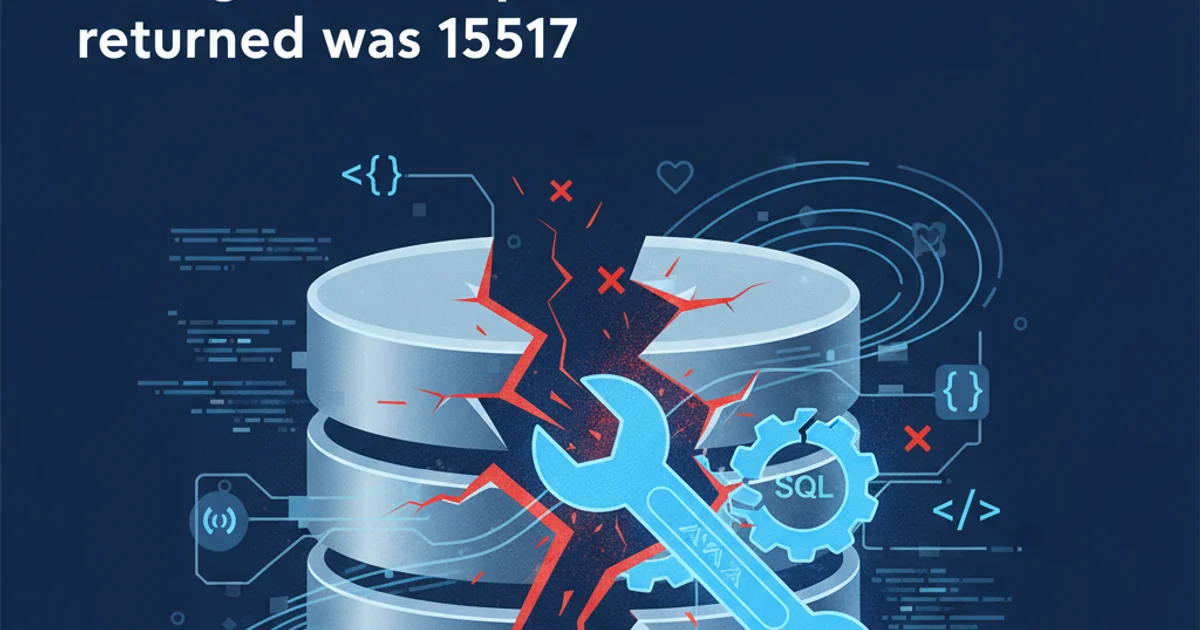MySQL server socket '/tmp/mysql.sock' connection issue
Troubleshooting MySQL Socket Connection Errors: '/tmp/mysql.sock'

Learn to diagnose and resolve common MySQL connection issues related to the '/tmp/mysql.sock' file on Linux and Homebrew installations.
Connecting to a MySQL server often relies on a Unix domain socket, typically located at /tmp/mysql.sock. This socket file facilitates fast, local communication between the MySQL client and server. When this connection fails, you'll encounter errors like Can't connect to local MySQL server through socket '/tmp/mysql.sock'. This article will guide you through understanding, diagnosing, and resolving these common connection problems, particularly for Linux and Homebrew users.
Understanding MySQL Socket Connections
Unix domain sockets provide an efficient way for processes on the same host to communicate. Unlike TCP/IP connections, which use network interfaces, socket connections bypass the network stack, offering lower latency and higher throughput for local connections. MySQL clients default to using this socket when connecting to localhost or 127.0.0.1 without specifying a port.
The /tmp/mysql.sock file is crucial for this mechanism. If the MySQL server isn't running, or if it's configured to use a different socket path, or if the socket file is missing or has incorrect permissions, clients will fail to connect.
flowchart TD
A["MySQL Client (e.g., `mysql` CLI)"] --> B{"Connection Type?"}
B -->|`localhost` or `127.0.0.1` (no port)| C["Attempt Unix Socket Connection"]
B -->|`localhost` or `127.0.0.1` (with port) OR Remote Host| D["Attempt TCP/IP Connection"]
C --> E{"Is `mysql.sock` present and accessible?"}
E -->|Yes| F["Successful Connection"]
E -->|No| G["Error: Can't connect to local MySQL server through socket '/tmp/mysql.sock'"]
D --> H["Successful Connection (if server listening on port)"]
D --> I["Error: Connection refused (if server not listening on port)"]MySQL Client Connection Flow
Common Causes of Socket Connection Errors
Several factors can lead to the /tmp/mysql.sock error. Identifying the root cause is the first step towards a solution.
- MySQL Server Not Running: This is the most frequent cause. If the MySQL daemon (
mysqld) isn't active, the socket file won't exist. - Incorrect Socket Path: The client might be looking for the socket in
/tmp/mysql.sock, but the server is configured to use a different location (e.g.,/var/run/mysqld/mysqld.sock,/usr/local/var/mysql/mysql.sockfor Homebrew). - Permissions Issues: The socket file or its parent directory might have incorrect permissions, preventing the client from accessing it.
- Socket File Deleted: Sometimes,
/tmpis cleared on reboot or by system maintenance scripts, removing the socket file while the server is still running. - Multiple MySQL Installations: If you have more than one MySQL instance, they might be conflicting over socket paths or ports.
Diagnosing and Resolving the Issue
Follow these steps to systematically diagnose and fix your MySQL socket connection problem.
1. Step 1: Verify MySQL Server Status
The first step is to confirm if your MySQL server is actually running. The commands vary slightly depending on your operating system and how MySQL was installed.
2. Step 2: Locate the Actual mysql.sock File
If the server is running but you still get the error, it's likely the client is looking in the wrong place. The server's configuration (my.cnf or my.ini) specifies the socket path. Common locations include /var/run/mysqld/mysqld.sock, /usr/local/var/mysql/mysql.sock (Homebrew), or /opt/homebrew/var/mysql/mysql.sock (Homebrew on Apple Silicon).
3. Step 3: Configure Client to Use Correct Socket Path
Once you've identified the correct socket path, you need to tell your MySQL client to use it. This can be done temporarily via the command line or permanently in a configuration file.
4. Step 4: Check Permissions
If the socket file exists and the server is running, but you still can't connect, check the permissions of the socket file and its parent directory. The MySQL user and the user running the client should have read/write access.
5. Step 5: Restart MySQL Server
Sometimes, a simple restart can resolve transient issues, especially if the socket file was unexpectedly deleted or corrupted.
Linux (systemd)
sudo systemctl status mysql
# If not running:
sudo systemctl start mysql
Linux (SysVinit)
sudo service mysql status
# If not running:
sudo service mysql start
Homebrew (macOS)
brew services list | grep mysql
# If not running:
brew services start mysql
sudo find / -type s -name "mysql.sock" 2>/dev/null
Command to find mysql.sock across the filesystem.
mysql --socket=/path/to/your/mysql.sock -u your_user -p
Connecting to MySQL using a specific socket path from the command line.
/etc/my.cnf or other global configuration files requires caution. Always back up your configuration before making changes.[client]
socket=/path/to/your/mysql.sock
[mysqld]
socket=/path/to/your/mysql.sock
Example my.cnf configuration to specify the socket path for both client and server.